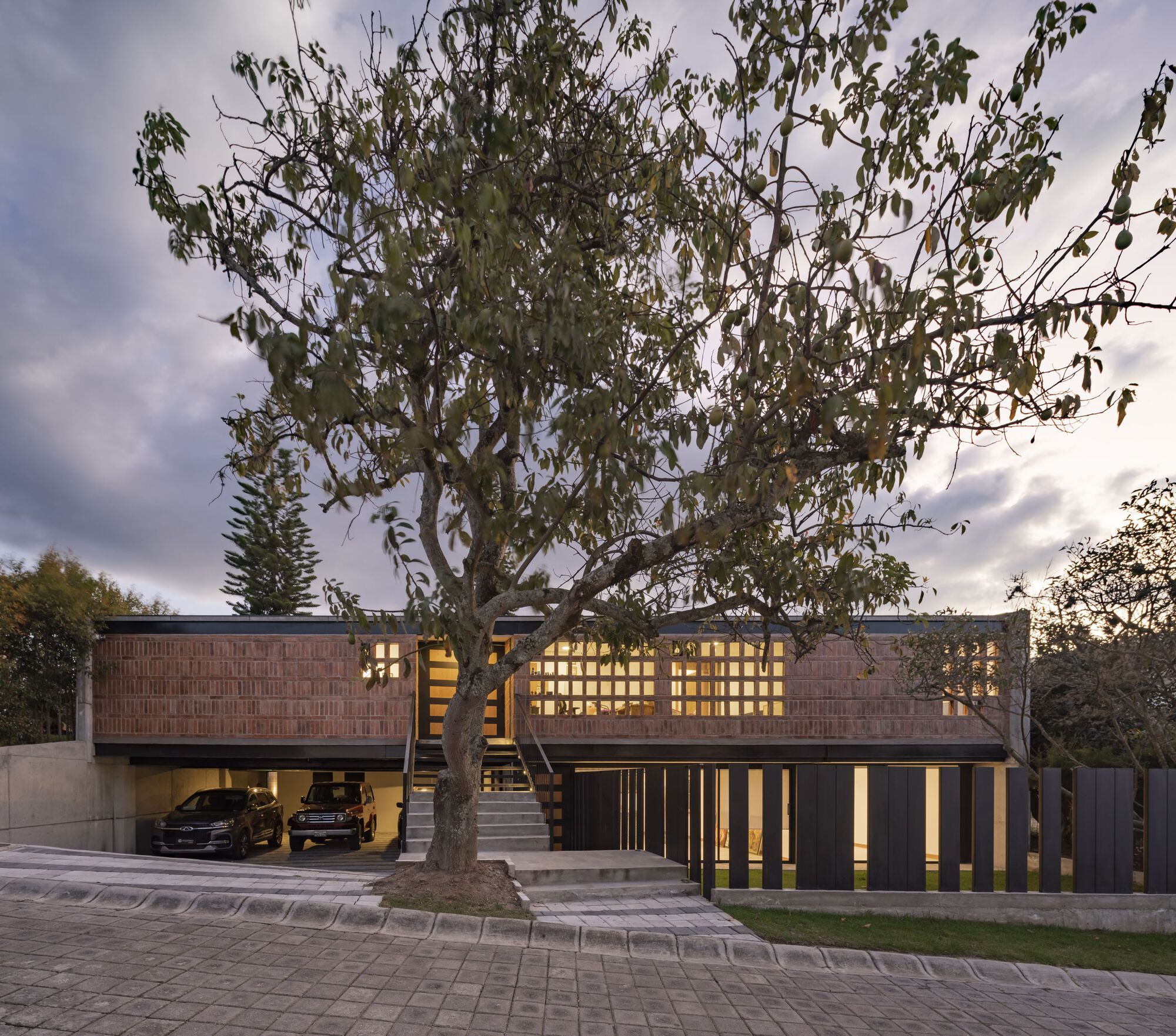RA House / Bernardo Bustamante Arquitectos
+ 16
Houses • Lumbisi, Ecuador Architects: Bernardo Bustamante Arquitectos
Area Area of this architecture project Area: 220 m²
Year Completion year of this architecture project Year: 2022
Photographs Photographs: BICUBIK
Manufacturers Brands with products used in this architecture project Manufacturers: FV Andina , Gatón Caro , Graiman , Ricaurte Guarderas , Rodes , Veto
Lead Architects: Bernardo Bustamante, Doménika Baquero, Gabriela Jaramillo
Engineer: Iván Delgado
City: Lumbisi
Country: Ecuador
More Specs
Less Specs
Text description provided by the architects. A house designed at the beginning of the COVID-19 pandemic, with a program and concept based on what homes had already experienced in the second quarter of 2020. As architects, we reconsidered the lifestyle we were leading, but above all, the importance of housing in those moments of confinement; which, in some way, we had neglected with contemporary paradigms of compact cities, where social relationships are simply resolved in public spaces.
These reflections motivated us to rethink established operating methods and generate in homes: workspaces, open and ventilated spaces, spaces for family enjoyment, quality spaces outdoors, and spaces for the care of our elders. This home was already intentionally equipped with these conditions.
The project included a main house of 220 m2, for a family of four, the couple and two daughters. And a second home of half the area, for the grandparents. In addition, a large area for parking and storage.
The first challenge was to resolve the two homes on a single floor, with access to outdoor areas, as well as the respective privacy of each one, on a 600 m2 lot. We took advantage of the double-sloping topography to do so. On the front axis, we placed the parking in the area that should be buried, and where the level of the street is already low, there is the apartment that benefits from the front garden that is for its exclusive use.
In the cross-section, we also used the natural topography to directly access the rear garden from the main house, which is on a second level, above the apartment and the parking. Its social areas have direct access, crossing a large porch that connects with the garden and a recreational pool. The bedrooms also have access to the garden with small stairs, which increase as the terrain descends. The master bedroom is at the end of the bar, one and a half meters above the level of the garden, which, together with a terrace, provides it with adequate privacy.
The implantation of the house is a Trapezium similar to the morphology of the terrain. It is five meters away from the street and leaves a front garden that is used by the smaller apartment and the access to the parking. This allows us to compact the program to generate a large rear garden for the use of the main house.
We also used the regulations in our favor. The ordinance allows for lateral attachments, as long as they do not exceed 4 meters in height. We wanted the volume to occupy the entire width of the lot to generate more gardens and for the lateral setbacks to be occupied with the program, so we extruded the roof to four meters at all vertices of the trapezoid. This generated a roof with the same slopes as the original topography of the terrain.
The construction system is very simple: two lateral load-bearing concrete walls are consolidated with a perpendicular retaining wall that solves the change in level in the terrain and a system of metal beams and a light metal roof, which allows us to have large spans and open spaces. The front facade was also worked with a handmade brick skin, with a special lock to generate lattices and controlled openings, according to the lighting needs of each of the spaces located on this facade.
This is a very simple project that blends with the topography and appears discreetly within the complex, blending in with the vegetation, with high-quality interior spaces. Made with traditional materials, concrete, brick, and steel, which generate a contemporary building for the habitat conditions of contemporaneity, thinking of housing as a protagonist within the life of the family.
Source: ArchDaily


